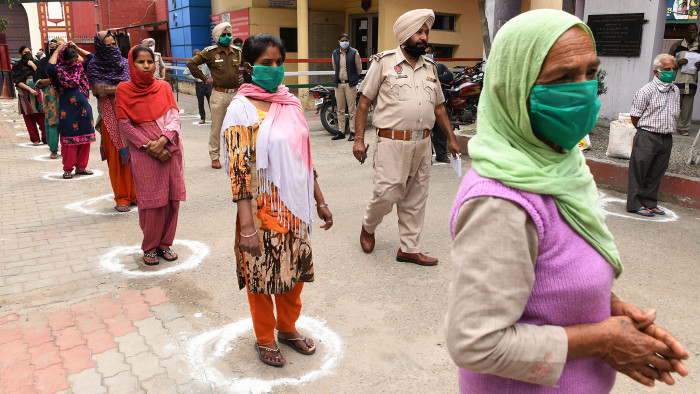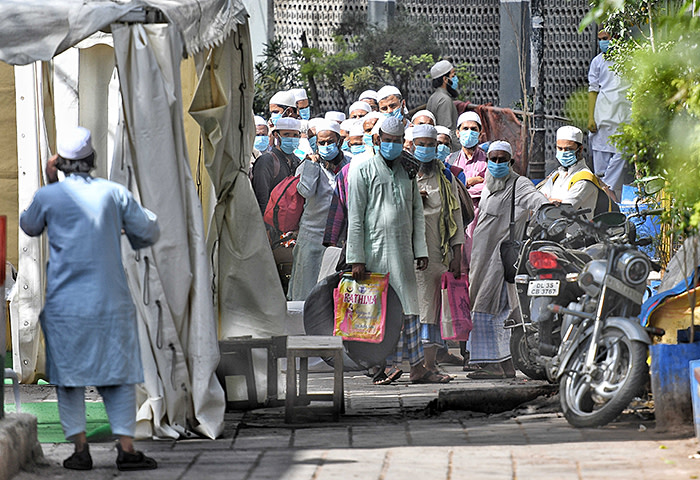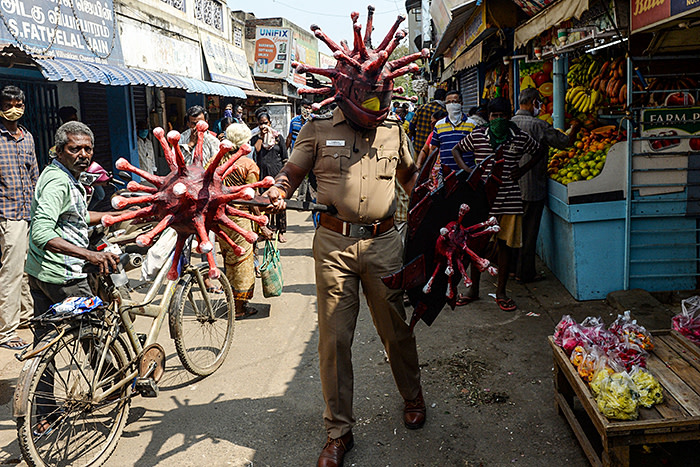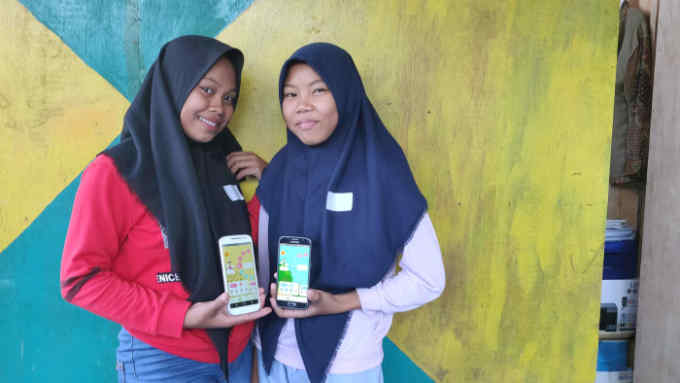India healthcare turns to big data to protect the masses

Roula Khalaf, Editor of the FT, selects her favourite stories in this weekly newsletter.
When the Indian government realised in late-March that Covid-19 was circulating among preachers associated with an influential Islamic missionary movement, it began a frantic quest.
In its search for participants in a congregation at the Tablighi Jamaat’s headquarters in a working-class New Delhi neighbourhood a few weeks earlier, authorities turned to mobile phone records.
Within days, about 20,000 people suspected of infection with coronavirus had been hospitalised or quarantined.
At the same time, New Delhi launched a free app — the Aarogya Setu, or Bridge to Health — to harvest mobile phone records, artificial intelligence and big data to help identify individuals potentially exposed to coronavirus through contact with other infected patients.
Available in 11 languages, the app was downloaded more than 3m times on its first day, with users promised insights into their own risk of infection, and warnings if they enter high-risk zones with clusters of infection.

Local health authorities also used phones to monitor people under home quarantine to ensure they followed the restrictions. In Karnataka, people under quarantine were required to provide selfies — with hourly geotags — to ensure they stayed put, while New Delhi authorities warned they would use phone signal locations to determine whether restrictions had been violated.
The use of such techniques reflects how India has harnessed technology and big data to help meet the health needs of its population of 1.35bn people, many of whom live below the poverty line.
Although such methods have proven to be a powerful tool for authorities in their race to contain coronavirus, they have also raised concerns about patient privacy and confidentiality, and about how these extensive technologies could be used in the future.
“Technology is a double-edged sword — it can help and it can harm,” says Sujatha Rao, India’s former health secretary. “It can be helpful in an epidemic like this, but what do you do once the epidemic is over? The state has been given a huge power; how do you know the state is not tempted to keep hold over this power?”

Apar Gupta, executive director of the Internet Freedom Foundation, a privacy and civil rights groups, says: “Mass surveillance is something that the government never actually stated they were implementing until now. It now seems very transparent about its ambitions.”
Even before the pandemic, New Delhi has been turning to big data and AI to tackle a healthcare crisis that had seen an estimated 60m vulnerable Indians pushed into poverty each year due to healthcare expenses.
With Indians confronting both poverty-linked infectious diseases — such as tuberculosis and diarrhoea — as well as illnesses linked to greater affluence such as diabetes and heart disease, public hospitals have struggled to cope with demand, prompting many patients to turn to costly private care.
In 2018, New Delhi launched a government-backed health insurance scheme — Ayushman Bharat, or Healthy India — which provides up to R500,000 ($6,600) in insurance cover for 500m vulnerable people, allowing them to be treated at private hospitals.
The foundation for this insurance system is Aadhaar, India’s vast biometrically linked database of citizens, which confirms the identity of patients seeking treatment and facilitates a centralised system of medical records.
“With more than 1.3bn people, unless we have a strong technology backbone, we can’t even think about universal healthcare,” says Indu Bhushan, chief executive of the National Health Authority, which runs the insurance scheme. The system also uses algorithms to help detect fraud — by patients, doctors or hospitals — that could otherwise drive up costs. “Artificial intelligence is being used very effectively in our system for the prevention and mitigation of fraud and abuse,” Bhushan adds.
The National Health Authority has developed algorithms to sound the alarm on 100 triggers suggesting possible fraud, including multiple claims for one-off procedures such as an appendectomy; patterns of frequent claims by one person; or doctors carrying out unusually high numbers of procedures. So far, about 200 hospitals have been barred from the scheme due to fraud concerns.

“One has to be ahead of the game,” Bhushan says. “Any money that is leaked out because of fraud and abuse is money that is not going to support poor patients.”
Some remain fearful about such extensive data collection in a country with a poor record of protecting patient privacy. In trying to contain coronavirus, for example, some state governments publicised lists of individuals under home quarantine — including their addresses — prompting concerns about safety and privacy.
“There is no data protection framework in India and no public institution to ensure that personal data shared under these apps are following a level of purpose limitation, in which the personal data is only used for the purpose for which it is gathered,” says Gupta. “This complete legal vacuum can reasonably lead to a large level of government surveillance, resulting in other political forms of surveillance.”
He adds: “These measures responding to a public health emergency are being done in ways in which there is a repeated exercise of extraordinary executive power — without the legal authority which would normally exist.”

Comments